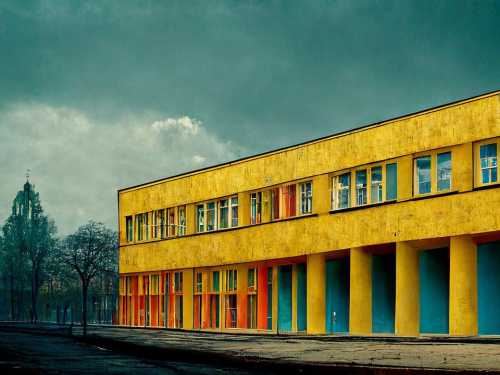
Our grandparents who are still alive remember that in 1943, Joseph Stalin decided to separate schools into girls' and boys', but soon the education became mixed again. Let's see why the experiment failed.
Gender equality
Before the revolution, in most secondary educational institutions (gymnasiums, boarding schools, colleges), girls and boys studied separately. However, the amount of knowledge given to representatives of different sexes was not the same. Boys studied literacy, exact sciences, and military affairs. Girls, in addition to literacy, foreign languages, and dances, were taught needlework and other disciplines that would be useful, primarily, to housewives.
Since 1917, the Bolsheviks had been striving for complete equality of the sexes, which included, among other things, the joint education of children of both sexes according to the same program. The boundaries between men and women regarding work and education were recognized as remnants of the bourgeoisie, and therefore had to be destroyed. On May 18, 1918, Lunacharsky, the People's Commissar of Education, introduced joint education for girls and boys as mandatory. The idea turned out to be very productive: the level of education improved significantly in the first years after the innovation.
But on October 24, 1942, another order appeared: separate education for boys and girls in the junior grades and in the lessons of initial military training. Stalin voiced the task of introducing separate education in secondary schools even before the beginning of the Great Patriotic War. In his opinion, gender equality had already been achieved in all spheres of the life of a Soviet person, and education was available to every citizen. Separate education was temporary, but now, in order to create exemplary schools, it is necessary to begin to take into account the peculiarities of the psychophysiological development of children of different sexes.
But why did Stalin decide to implement another education reform at the most inopportune moment – in 1943, when a devastating war was underway?
Features of separate learning
According to the People's Commissariat of Education, coeducation causes many difficulties, both for students and teachers. Separate education was introduced on September 1, 1943. According to the project, women's and men's schools were to be located in different buildings, have their own military training, sports and other necessary equipment. However, the authorities managed to implement what they had planned only in large cities. In small settlements, different floors of the school and different classes were allocated for different sexes. In villages, where there was a shortage of both premises and teachers, education remained coeducational. The curriculum remained practically the same as before. Only sports and military training changed: for boys, additional pre-conscription training lessons were introduced, for girls – medical.
Today, historians report that Stalin decided on such an experiment because of the terrible reality of the war period. A huge number of men were dying at the front, and the country needed new defenders, who were planned to begin training for war from the first grade.
Many children in those years were left without parents, so teachers tried to teach boys what living relatives could not. They tried to captivate children with military games, boxing training, lessons of a young scout and a young fighter. In the education of girls, the emphasis was placed on home economics and first aid lessons: they were explained that they should be, first of all, a mother and a housewife, and at the front – a nurse, a nurse, a signalman, but not a soldier.
Declining performance and lack of discipline
It soon became clear that the idea of separate education was a failure from the start. The vast majority of teachers noted that the performance in women's classes was an order of magnitude higher than in men's. The teachers who taught the boys were not coping. Discipline in the classes was practically absent, the boys fought to the point of blood and serious injuries, smoked, cursed, some even drank alcohol.
In small towns, the most “desperate” hooligans gathered criminal gangs that attacked other children, and sometimes even adults, robbed and beat them. Teachers recorded all the events in reports, but the general public did not receive information: no one had the right to doubt the correctness of the actions of the USSR government.
At the same time, the children themselves wanted to study together. In addition, it almost immediately became obvious that in a mixed-sex team not only academic performance is good, but also discipline. Many boys do not allow themselves to do in front of girls what they could do in a purely male team. This is especially true for teenagers who want to impress the opposite sex and seem not like a brawler, but a gentleman and a knight.
Modern psychologists confirm that in mixed classes the psychological atmosphere is much more favorable than in single-sex classes, since children socialize more easily and learn to behave in a team that resembles an “adult.”
The collapse of separate learning
The experiment with the separation of schools into boys and girls failed and ended in 1954. Co-education proved to be better than separate education. While this was almost imperceptible in girls' classes, the separate education of boys proved to be a serious problem. Orders to strengthen school discipline, issued repeatedly in 1944-1951, and public control did not bring results.
Nikita Khrushchev, who succeeded Stalin, considered it reasonable to abolish separate education, because it hindered the implementation of the tasks of properly educating communist youth.
Perhaps if separate education, which is still practiced in many countries, had not been introduced during the most difficult years for the country, the results of the experiment might have been different. But history, as we know, does not recognize hypothetical scenarios, so we have what we have.





